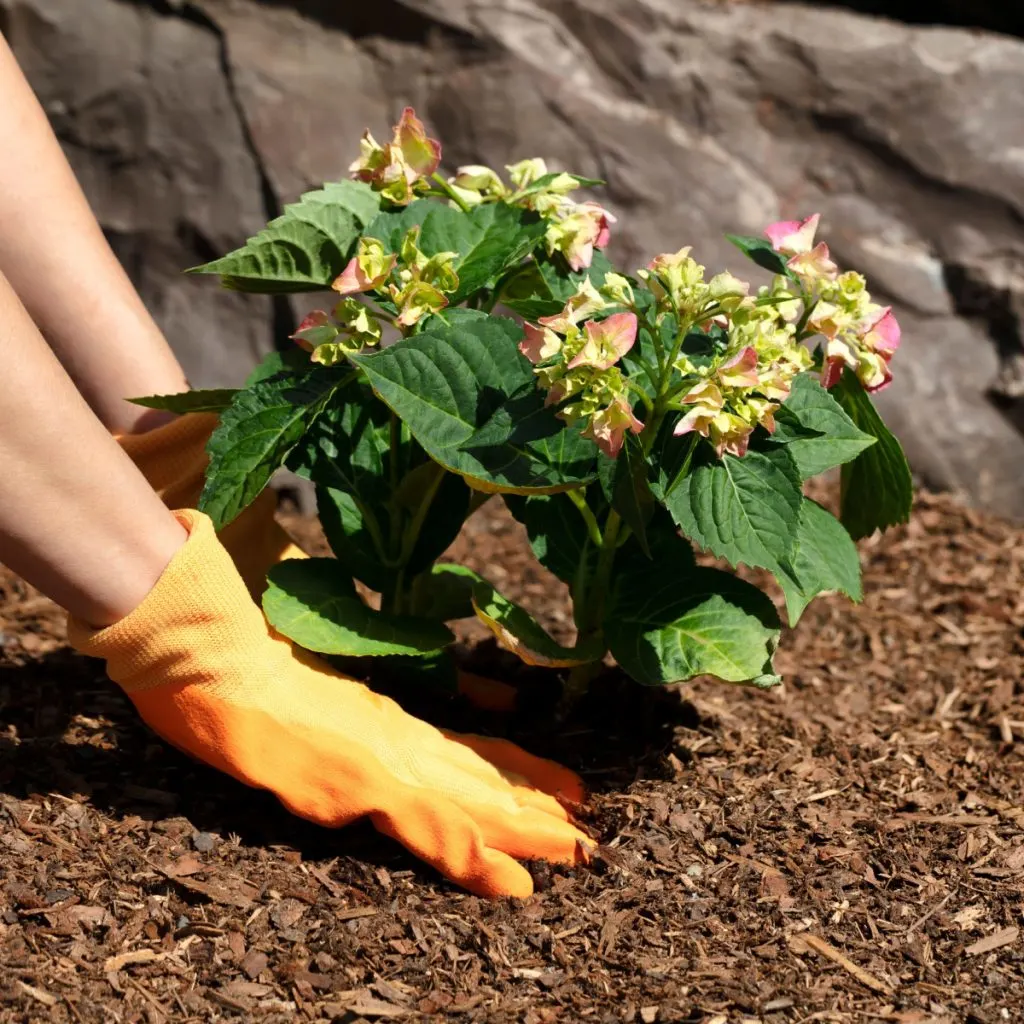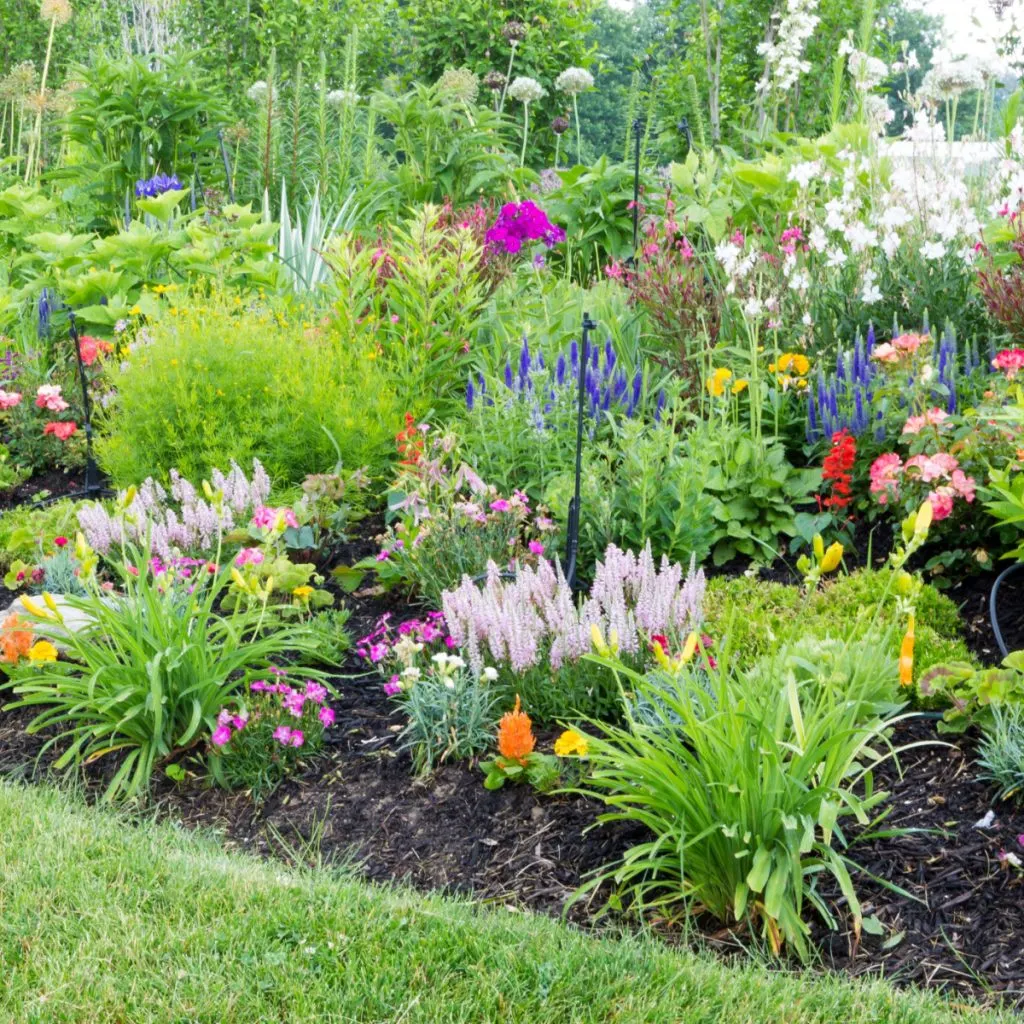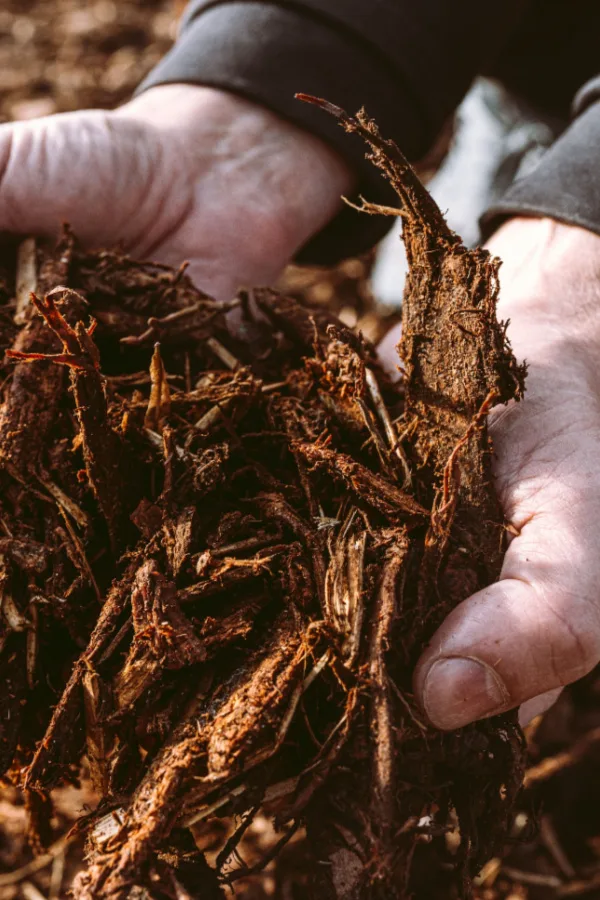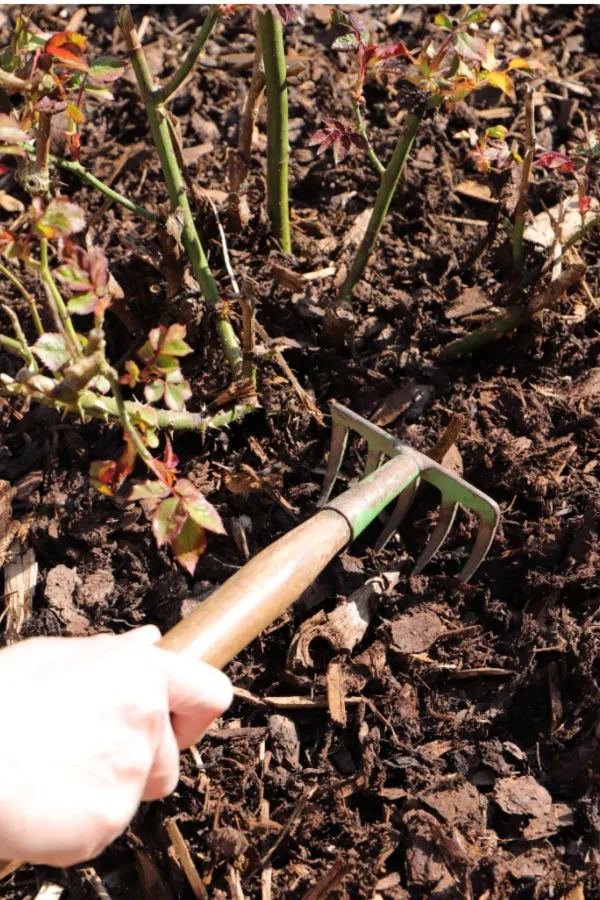Want to know how to mulch your flowerbeds this year to finally stop weeds – and end that endless chore of weeding all summer long for good?
Without a doubt, there is no better way to fight weeds than with a layer of mulch. And because of that, every single spring, millions upon millions of gardeners and homeowners faithfully trudge out to their flowerbeds to lay down mulch – all in hopes of stopping those dreaded weeds once and for all.
The good news? Mulch can absolutely stop weeds. In fact, it can not only stop weeds already in the beds – it can also stop future weeds from popping up all summer. The bad news? It can only do that when put down properly. And unfortunately, more times than not, it’s not!

The Benefits Of Mulch Beyond Stopping Weeds
It’s amazing how many benefits a good layer of mulch can bring to the plants in your flowerbeds. Beyond stopping the weeds that steal nutrients and water from your plants, a proper layer of mulch can also help keep more moisture in the soil.
When mulch is put down thick, it protects the moist soil from drying out from wind or the hot summer sun. Even more, it can also trap and hold moisture when it rains or you water. And when it comes to growing perennials and annuals – having adequate moisture is critical for strong root growth and healthy plants.
But if that wasn’t enough, that same thick layer also helps keep the soil temperature regulated. Why is that important? Because the roots of the perennials and annuals growing in your flowerbeds perform far better when they don’t have to deal with wild swings in temperature. And that blanket of mulch keeps the roots of plants insulated quite well.
But at the end of the day, what gardeners really want from putting mulch down is for it to stop weeds. And by simply following the three key secrets of mulching success listed below – that is exactly what it will do. And believe it or not, it all starts by working less!

How To Mulch Flowerbeds To Stop Weeds
#1 Don’t Disturb The Existing Mulch
One of the biggest mistakes gardeners make when spring mulching is to “clean up” their beds by raking the old mulch first. Not only is it time consuming, it actually sets your flowerbeds up for more weeds than ever!
The real secret to mulching in the spring is to actually work less. The more you disturb the existing mulch and dig in the soil, the more weeding you will have this summer. Why? Because since last fall, hundreds if not thousands of weed seeds have blown in on top of your existing mulch. And the minute you rake or disturb the mulch, it drops those seeds right through to the soil below.
Weed seeds on the surface do not have the soil they need to germinate. But if they can make it down to the soil, they are more than capable. Not only that, now they have a nice layer of mulch on top to help keep moisture in and help them sprout to life.
Whatever you do, try to disturb the soil and mulch the least you can before mulching. If taking out existing weeds, use a weed puller instead of a shovel.
Listen In Below To Our Podcast For More Great Tips For Eliminating Weeds In Flowerbeds!
Shovels dig up big sections of mulch and soil and allow weed seeds to find a great home in the soil below. A weed puller simply pulls up the weeds while disturbing little around it. Many even allow you to pull the weed without even bending over! Product Affiliate Link: Grampa’s Stand Up Weed Puller Tool With Long Handle
Last but not least, don’t rake your mulch during the season to “freshen” it up. This too will drop weed seeds to the soil below. Remember, working less is actually working harder to stop weeds!
#2 Using The Wrong Type Of Mulch – How To Mulch Flowerbeds To Stop Weeds
If you want to stop weeds and grow healthy plants in your flowerbeds, then selecting the right mulch is critical. Unfortunately, all mulches are not made the same.
The best mulch of all for stopping weeds is shredded hardwood or hardwood bark mulches. Not only do these both form a great barrier against weed seeds, they also have the benefit of adding valuable nutrients to your soil as they break down.

But when selecting your hardwood mulch, the type and size matters! Look for mulches that are a bit larger in size with only a single or double shred. Triple shredded or ultra fine shredded mulches may look great, but they will cause more weeds to appear.
These super fine mulches act more like soil. And weeds can actually germinate quite quickly in them. Even worse, they break down so fast you will need to replenish them far more often. That, of course, can mean quite the mulch expense year after year!
Pine needles can also work well as an alternative. They do take a long time to break down in the soil to help plants, but they can be effective at stopping weeds – and also cost effective if you happen to have lots of pine trees! See our article: How To Use Pine Needles In Flowerbeds, Gardens & More!
Cypress, stone, and even synthetic man-made rubber mulches are not good choices. For starters, they add little to no value to the soil. They can also heat up quickly and harm plants in the hot summer sun.
#3 Put The Mulch On Thick! How To Mulch Flowerbeds To Stop Weeds
Last but not least, don’t skimp on the mulch! Putting down a two to three inches of mulch may look good for a few weeks, but it will not be enough to stop weeds or supply the benefits of soil and moisture help.

To be effective, a layer of mulch needs to be a minimum of four inches thick – with six inches being ideal. This thick layer keeps weed seeds from finding soil – and you from having to weed all summer.
It’s far better to spend a bit more money upfront on a thicker layer of mulch. In the long run, it will save on endless weeding and having to keep buying mulch. Here is to mulching your flowerbeds this year and putting a stop to weeds and that endless chore of summer weeding for good!
Simple Garden Life
Follow Our Facebook Page For Even More Great Tips! Simple Garden Life Facebook Page
Simple Garden Life is a website dedicated to keeping gardening fun, simple and enjoyable! We publish two new articles each week along with a new garden podcast episode every two weeks. This article may contain affiliate links.
